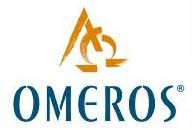预约演示
更新于:2025-05-07
VDCCs x PPAR
更新于:2025-05-07
关联
1
项与 VDCCs x PPAR 相关的药物作用机制 PPAR拮抗剂 [+1] |
在研机构 |
原研机构 |
非在研适应症 |
最高研发阶段临床2期 |
首次获批国家/地区- |
首次获批日期1800-01-20 |
2
项与 VDCCs x PPAR 相关的临床试验NCT00857090
Double-Blind, Placebo-Controlled, Concentration-Escalating, Pharmacokinetic Study Evaluating the Systemic Absorption, Safety, and Efficacy of OMS201 in Subjects Undergoing Ureteroscopic Treatment of Ureteral- or Renal Collecting System-Located Stones
The objectives of the study are to assess the systemic exposure, safety and efficacy of three concentrations of OMS201 in subjects undergoing retrograde ureteroscopic removal of upper urinary tract stones.
开始日期2009-03-01 |
申办/合作机构 |
NCT00599664
Double-Blind, Placebo-Controlled, Two-Center, Pharmacokinetic Study Evaluating the Systemic Absorption and Safety of OMS201 in Subjects Undergoing Ureteroscopic Treatment of Unilateral Ureteral- or Renal Collecting System-Located Stones
Evaluate the safety and systemic absorption of OMS201 following exposure during ureteroscopy.
开始日期2007-12-01 |
申办/合作机构 |
100 项与 VDCCs x PPAR 相关的临床结果
登录后查看更多信息
100 项与 VDCCs x PPAR 相关的转化医学
登录后查看更多信息
0 项与 VDCCs x PPAR 相关的专利(医药)
登录后查看更多信息
21
项与 VDCCs x PPAR 相关的文献(医药)2023-09-01·Experimental and therapeutic medicine
Transcriptome analysis of hydrogen inhibits osteoclastogenesis of mouse bone marrow mononuclear cells.
Article
作者: Zeng, Hui ; Liu, Yong ; Wang, Wei ; Zeng, Yong
2022-12-01·Biochimica et Biophysica Acta (BBA) - Molecular Basis of Disease
Deciphering the role of predicted miRNAs of polyomaviruses in carcinogenesis
Article
作者: Ahmed, Tasnim ; Islam, Abul Bashar Mir Md Khademul ; Zinnia, Maliha Afroj ; Shahrear, Sazzad
2021-08-01·American Journal of Hematology
The mutational landscape of cold agglutinin disease: CARD11 and CXCR4 mutations are correlated with lower hemoglobin levels
Letter
作者: Delabie, Jan ; Trøen, Gunhild ; Tjønnfjord, Geir E. ; Małecki, Jędrzej ; Tierens, Anne ; Berentsen, Sigbjørn ; Østlie, Ingunn ; Randen, Ulla ; Małecka, Agnieszka
分析
对领域进行一次全面的分析。
登录
或

Eureka LS:
全新生物医药AI Agent 覆盖科研全链路,让突破性发现快人一步
立即开始免费试用!
智慧芽新药情报库是智慧芽专为生命科学人士构建的基于AI的创新药情报平台,助您全方位提升您的研发与决策效率。
立即开始数据试用!
智慧芽新药库数据也通过智慧芽数据服务平台,以API或者数据包形式对外开放,助您更加充分利用智慧芽新药情报信息。
生物序列数据库
生物药研发创新
免费使用
化学结构数据库
小分子化药研发创新
免费使用
